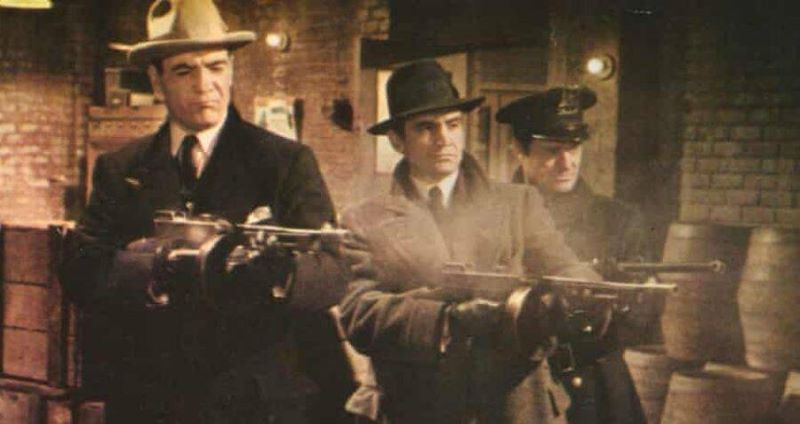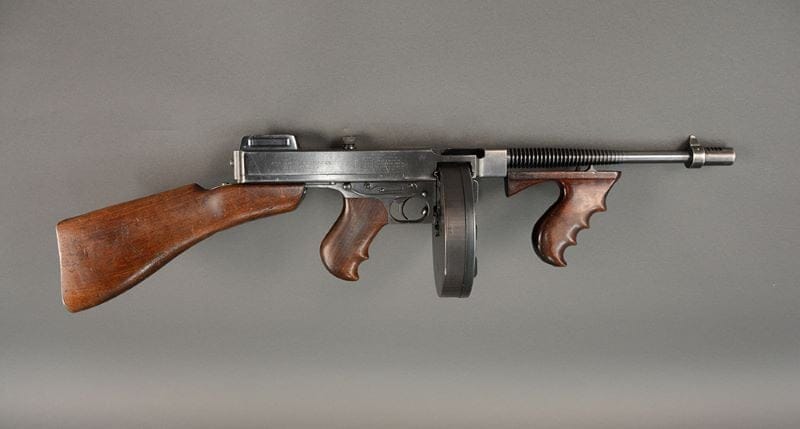Have you ever wondered how the National Firearms Act (NFA) started and how we ended up where we are today? Today we’re taking a look at the history of the NFA from its beginnings nearly a century ago, to how it looks in modern times.
The National Firearms Act (1934)
It all began back in 1934 when Congress enacted the new law, which required people to register NFA firearms with the Secretary of the Treasury and imposed a $200 tax on each NFA weapon. NFA firearms included fully automatic firearms, suppressors (commonly called “silencers”), shotguns having a barrel length under 18 inches, rifles with a barrel length under 16 inches, and firearms classified as Any Other Weapon.
The original act also levied a tax on the making, transfer, and importation of NFA weapons. This tax applied to persons and businesses who were making these weapons.
Obviously, in 1934, $200 was an exorbitant sum of money for individuals (and even businesses) to have to pay. The real intent of the $200 tax was not as much to raise funds as it was to make it virtually impossible for people to legally obtain NFA weapons. In effect, Congress was trying to impose a “ban,” of sorts, on these types of weapons. They did not believe that people should be able to own fully automatic weapons, among others.
A combination of factors contributed to the creation and enactment of the NFA. After WWI, the US economy began booming and the 18th Amendment banned the sale, possession, and consumption of intoxicating liquor. These factors, combined, led to a black market economy that was unimaginably huge. There was money to be made, and criminals came forth to make it. Illegally manufactured alcoholic beverages were made and imported.

The various factions who were dealing in illegal alcohol clashed and began warring over profits, in much the same way we see our current drug wars playing out. Violence became more commonplace, and some criminals turned to automatic weapons.
We see television programs scenes that lead us to believe that half the population was running around with Thompson Submachine guns, and it’s quite dazzling. However, it’s debatable how many times these weapons were actually used in crimes. The St. Valentine’s Day Massacre was one such highly publicized event. In reality, though, these types of weapons were likely not used as often as we’re led to believe. Nevertheless, Congress used the situation as a springboard for their legislation, which obviously passed and we are still affected by it today.

Suddenly, it had become illegal to possess a machine gun or other NFA weapon. Immediately, every criminal either turned in his illegal weapon or else quickly registered it with the authorities. This compliance, in turn, virtually eliminated violence overnight. Across the nation, organized crime members united with nuns and priests, and they all held hands while singing Kumbaya. Peace and harmony had been restored, and it was all due to Congress laying down the law!
Well…maybe not quite. Just as we see today, a law does not compel criminals to obey it. Amazingly, they just go on being criminals and continue breaking the law.

The way the original 1934 NFA was set up, people who possessed an NFA weapon were required to register it with the Treasury Department. They, in turn, could contact state authorities and have the person—who just complied with the law—prosecuted for possession of a firearm that violated state law.
In 1968, the Haynes case changed things. It held that the possessor of an NFA weapon had a defense against the prosecution, in that the possessor of the weapon was protected under the 5th Amendment from self-incrimination. The Haynes decision made it next to impossible to enforce the 1934 act.
The Gun Control Act (1968)
Title II of the Gun Control Act (GCA) of 1968 was a revision of the National Firearms Act of 1934. It changed the NFA by eliminating the requirement for those possessing unregistered NFA weapons to register them. The next thing this act did was to prevent anyone from being prosecuted if they did register an NFA weapon.
Additionally, the GCA of 1968 added an amendment about “destructive devices” and changed the definition of “machine gun.”
Firearms Owners’ Protection Act (1986)
The word “Protection” is a real play on words with this one. This act further defined “silencer” by adding “Combinations of parts for silencers and any part intended for use in the assembly or fabrication of a silencer.” (Per the ATF website).
In short, if you possess one part that could be made into a silencer, you could be violating federal law. Now I’m not a lawyer, so take that for what it’s worth. The wording, as with a lot of government definitions, is rather vague. But merely having a combination of silencer parts would likely net you a decade in Federal prison.
This act also exempted government agencies; They can possess any type of weapon without restriction.
Today
These days, for the most part, the $200 tax is still in effect. Of course, now, it is not such a huge expenditure for firearms enthusiasts. The prohibitive nature that Congress once levied has greatly faded; a huge percentage of my gun-loving friends possess NFA weapons.
Short Barreled Rifles and silencers seem to be the most popular choices these days, from what I can gather from friends and associates. We can no longer make full auto weapons, so those are far more expensive to come by.
NFA weapons include:
- Full Auto (Machine Guns) fire more than one shot with one pull of the trigger, without reloading.
- SBRs (Short Barreled Rifles) having barrels under 16 inches in length (or an overall length less than 26 inches) are also popular.
- SBSs (Short Barreled Shotguns) with barrels under 18 inches and an overall length of less than 26 inches.
- Silencers are portable devices that are designed to disguise or muffle the report of a firearm.
- Destructive Devices were added in 1968 and include any type of explosive material or device and any gun with a bore over .5, except for shotguns.
Because the Firearms Owners’ Protection Act of 1986 prohibited the new manufacture or transfer of machine guns after 1986, supplies of such firearms basically froze. No new ones could be made or transferred except to government agencies.
This has caused the prices of full auto weapons that are in circulation currently to skyrocket. Typical supply and demand. If you are approved to own one through the BATF, you can absolutely own one…if you can afford it.
Owning An NFA Weapon
You can fill out an application with the ATF to own an NFA weapon. You will be fingerprinted and have an extensive background check performed by the ATF. After the waiting period (often up to a year), if you approved, the weapon can then be picked up. If you are a person who does not like “red tape”, this process might not be for you.

NFA Violations
Those who violate the NFA can find themselves in deep trouble. They can accrue fines of up to $10,000 for the violation. Additional fines of up to $500,000 can be levied for tax evasion (remember that $200 tax you didn’t pay to get approval for the weapon?). A stay with deluxe accommodations in Federal Prison of up to 10 years can also be arranged for violators. Of course, since you’d be a felon, you could never own firearms again in your life. The bottom line is that we can own machine guns and other naughty weapons, so long as we pay the piper.
If you have any questions regarding procedures, feel free to visit the ATF website.


